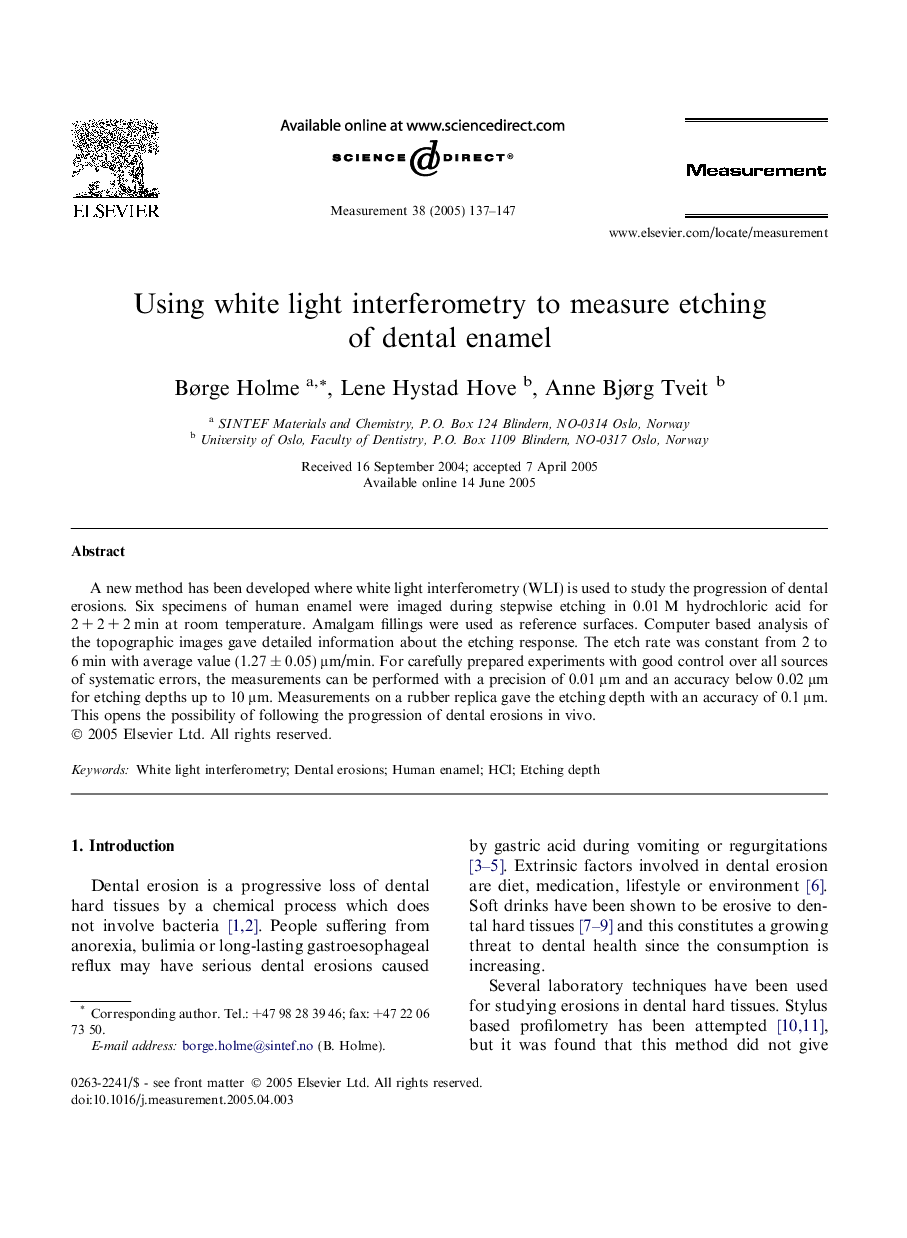| Article ID | Journal | Published Year | Pages | File Type |
|---|---|---|---|---|
| 10407530 | Measurement | 2005 | 11 Pages |
Abstract
A new method has been developed where white light interferometry (WLI) is used to study the progression of dental erosions. Six specimens of human enamel were imaged during stepwise etching in 0.01 M hydrochloric acid for 2 + 2 + 2 min at room temperature. Amalgam fillings were used as reference surfaces. Computer based analysis of the topographic images gave detailed information about the etching response. The etch rate was constant from 2 to 6 min with average value (1.27 ± 0.05) μm/min. For carefully prepared experiments with good control over all sources of systematic errors, the measurements can be performed with a precision of 0.01 μm and an accuracy below 0.02 μm for etching depths up to 10 μm. Measurements on a rubber replica gave the etching depth with an accuracy of 0.1 μm. This opens the possibility of following the progression of dental erosions in vivo.
Related Topics
Physical Sciences and Engineering
Engineering
Control and Systems Engineering
Authors
Børge Holme, Lene Hystad Hove, Anne Bjørg Tveit,
